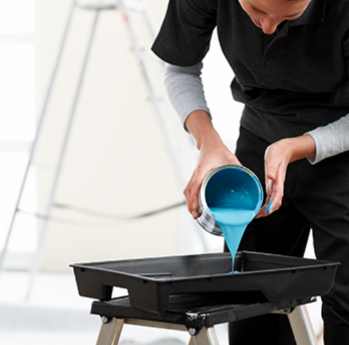News
Does colour in the workplace really matter? - 28 August 2018
Historically, 'work' was never supposed to be fun and workplaces reflected that fact. Our places of work were often drab, functional and minimal to match the nature of work.
But things have moved on, with some of the world's biggest companies, such as Google and Facebook, leading the way in the creation of comfortable and exciting working environments. Indeed, modern scientific thinking shows how the right working environment can positively impact your staff's well-being and in turn, their productivity. It's simple, happy staff are productive staff – there's little to disagree with there!
In this context, the importance of colour in the workplace can't be overstated. You might not think the colour you decide to cover your office walls with will make any kind of difference, but there is a lot of evidence to suggest you would be wrong in that assumption.
A study from the University of Texas back in 2007 found that dull beige, grey and white offices (the traditional shades for offices in the past) caused feelings of depression and sadness, especially in women. Men suffer similar feelings when confronted by orange and purple workplaces, the study also found.
In 2016, the world's ugliest colour, Pantone448C, was discovered and used on tobacco packaging to turn people off smoking by the Australian government. Colour can be used to modify behaviour.
But it's not all about negativity! Different colours have different psychological properties, both good and bad, that work in different positive ways throughout your working environment. The key when designing the colour scheme of your office is to create the right balance for your business goals.
How do colours work in practice?
Obviously, there are many different shades of many different colours, all of which work in slightly different manners. These are a few basic pointers on how colours can work for you.
Natural, earthly colours such as green and blue (considered calming colours) have been shown to improve efficiency and focus while promoting a general sense of well-being. These colours are good choices for promoting happiness and calm.
Red, on the other hand, is an intense and active colour that has been shown to increase heart-rates . This colour can be used to draw attention to important parts of the office or to promote productivity in high octane environments.
Yellow is mellow and has been recognised as the colour of optimism. It's energetic and fresh and is often seen as a good shade for creative working spaces.
Reflecting your brand
Colour can also play an important part in connecting your staff, and visitors, to your brand and vision through associations, ideas and emotions. This is something you may have invested in for public-facing branding but it is also working looking inward to do this for your staff as well.
Your working environment can be used as an effective tool and a unique way to reflect what your brand is all about, especially through the use of colour. Using your company's colour palette across the workspace can be one way of getting staff to positively invest themselves in you.
If you can incorporate this into your space while using effective colour schemes, you will be on the way to creating the perfect working environment.
The right vibe for you and your team
So much more than simple decoration, colour in the workplace can take on a new importance as a positive tool to improve your day, positively affecting everyone's mood, concentration and stress levels.
Take a look around your office. Much to improve? Be sensitive, seize the moment and add some colour.

